



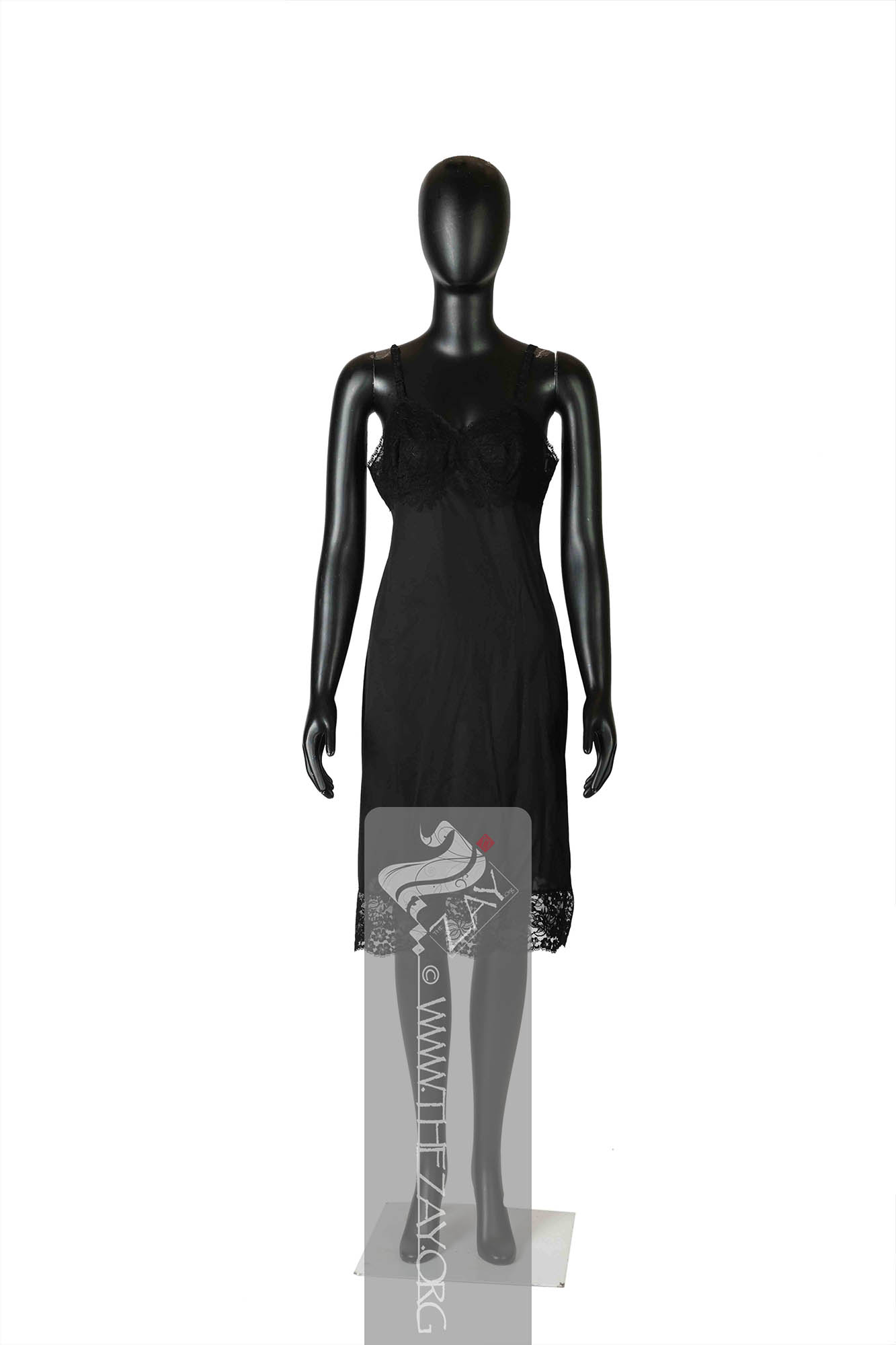
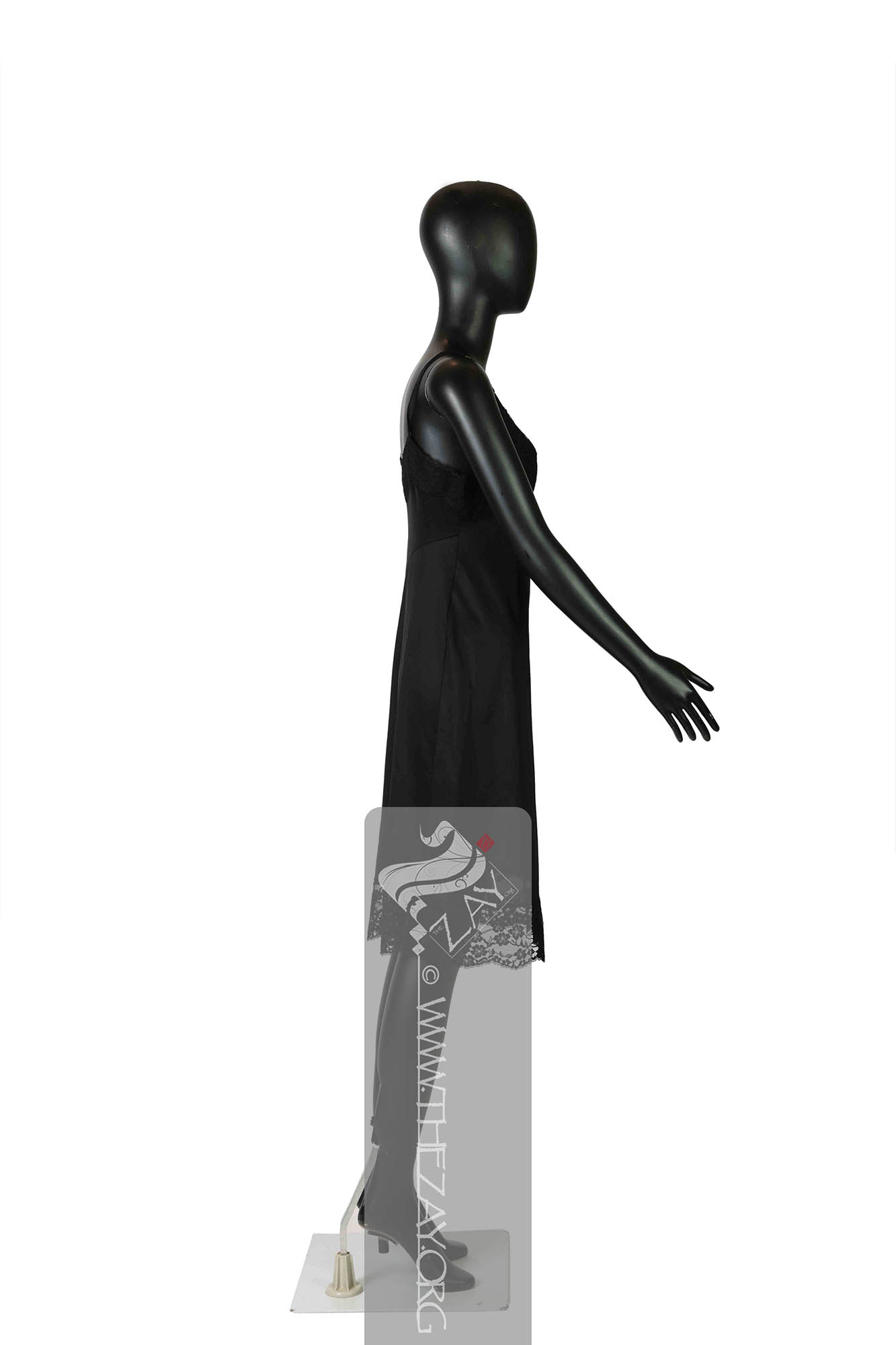
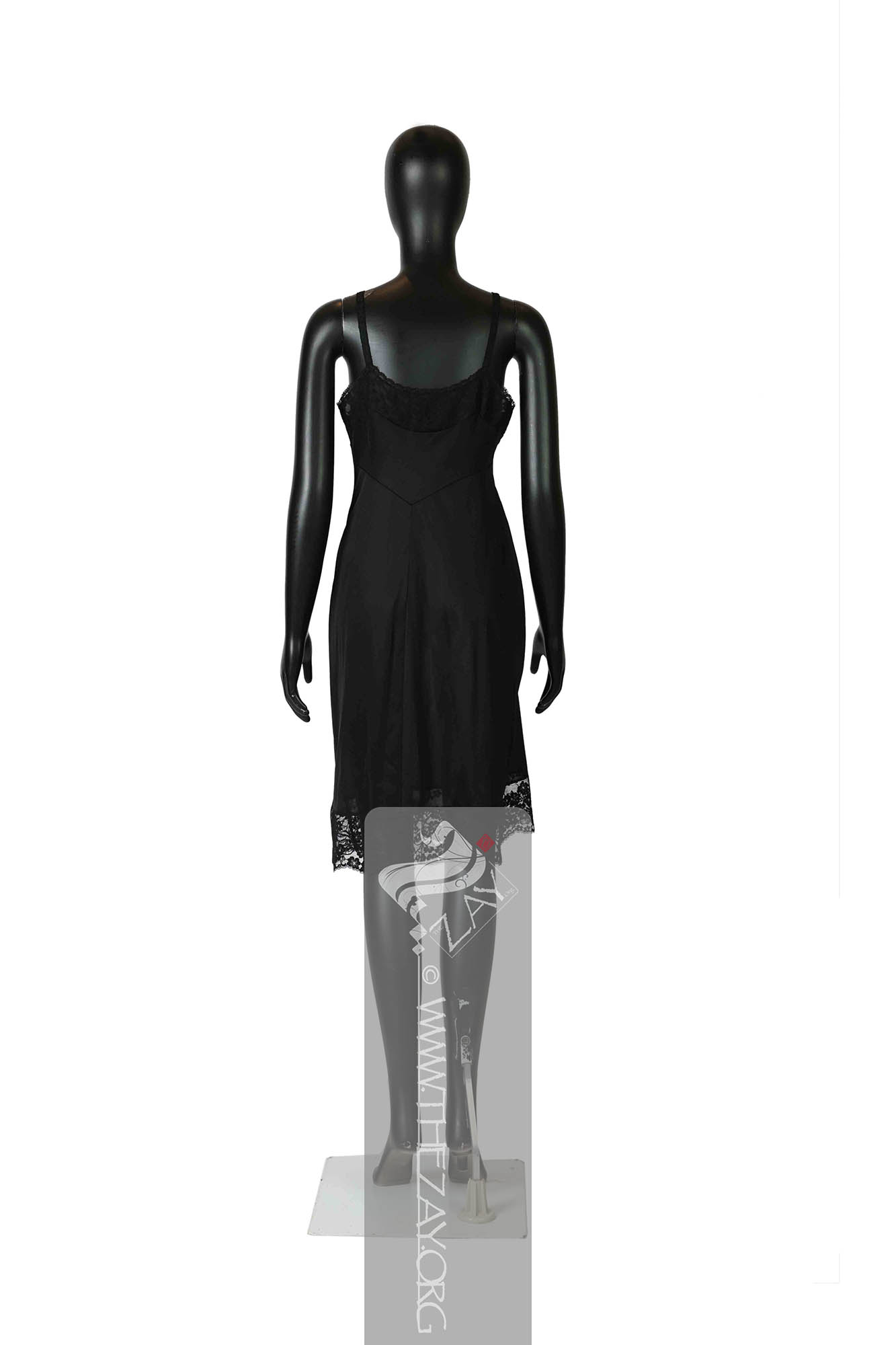
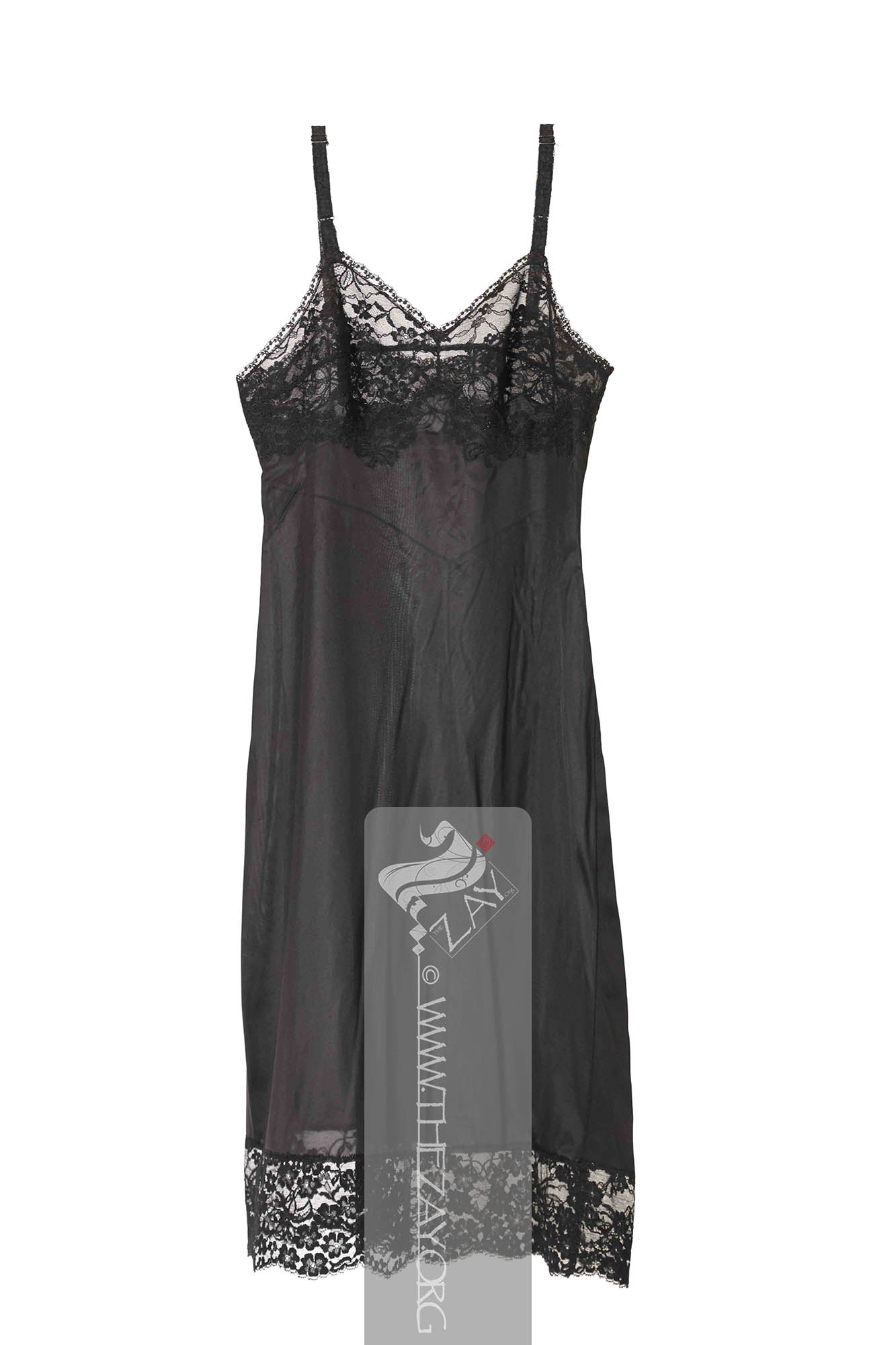
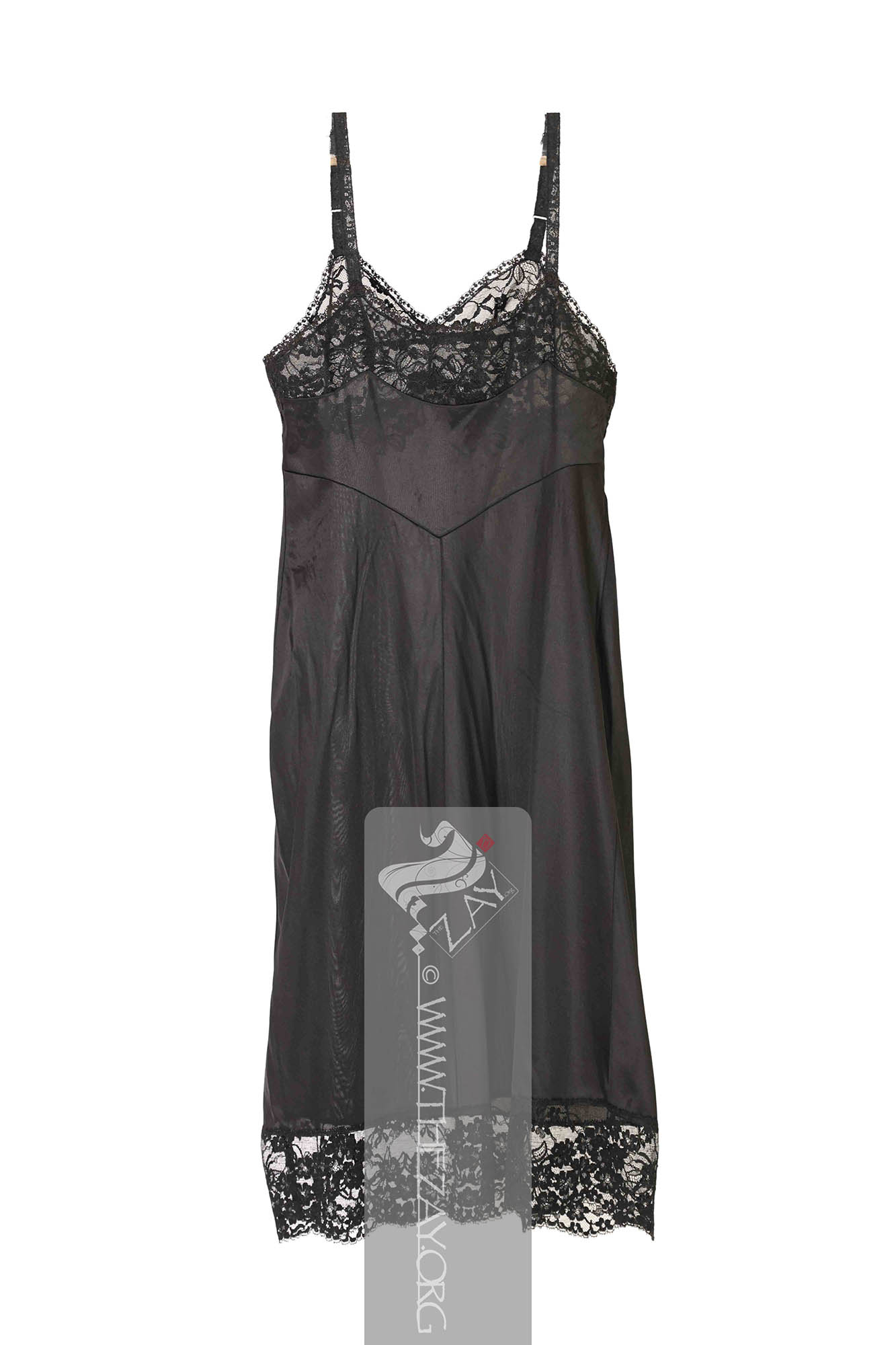

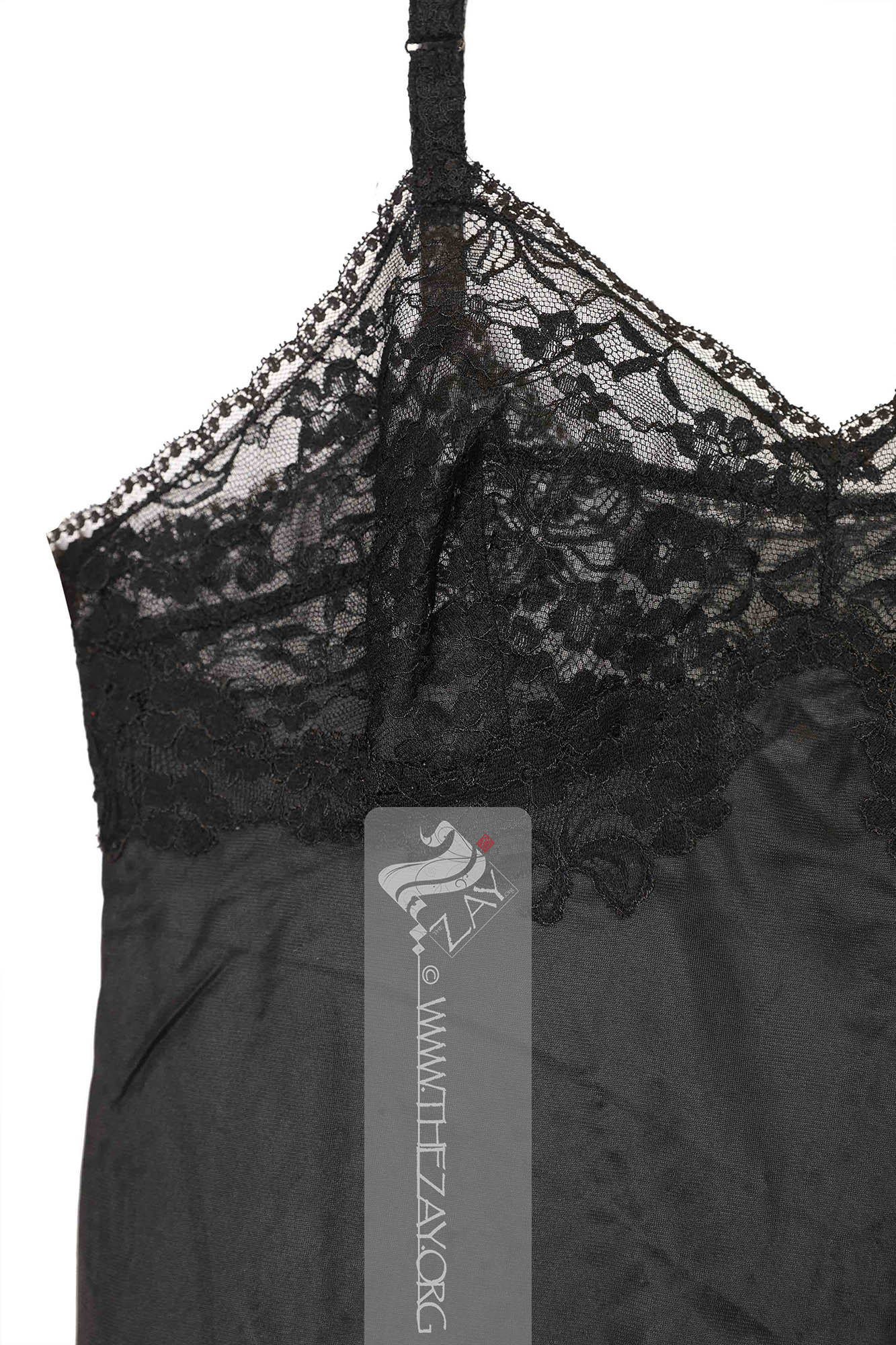

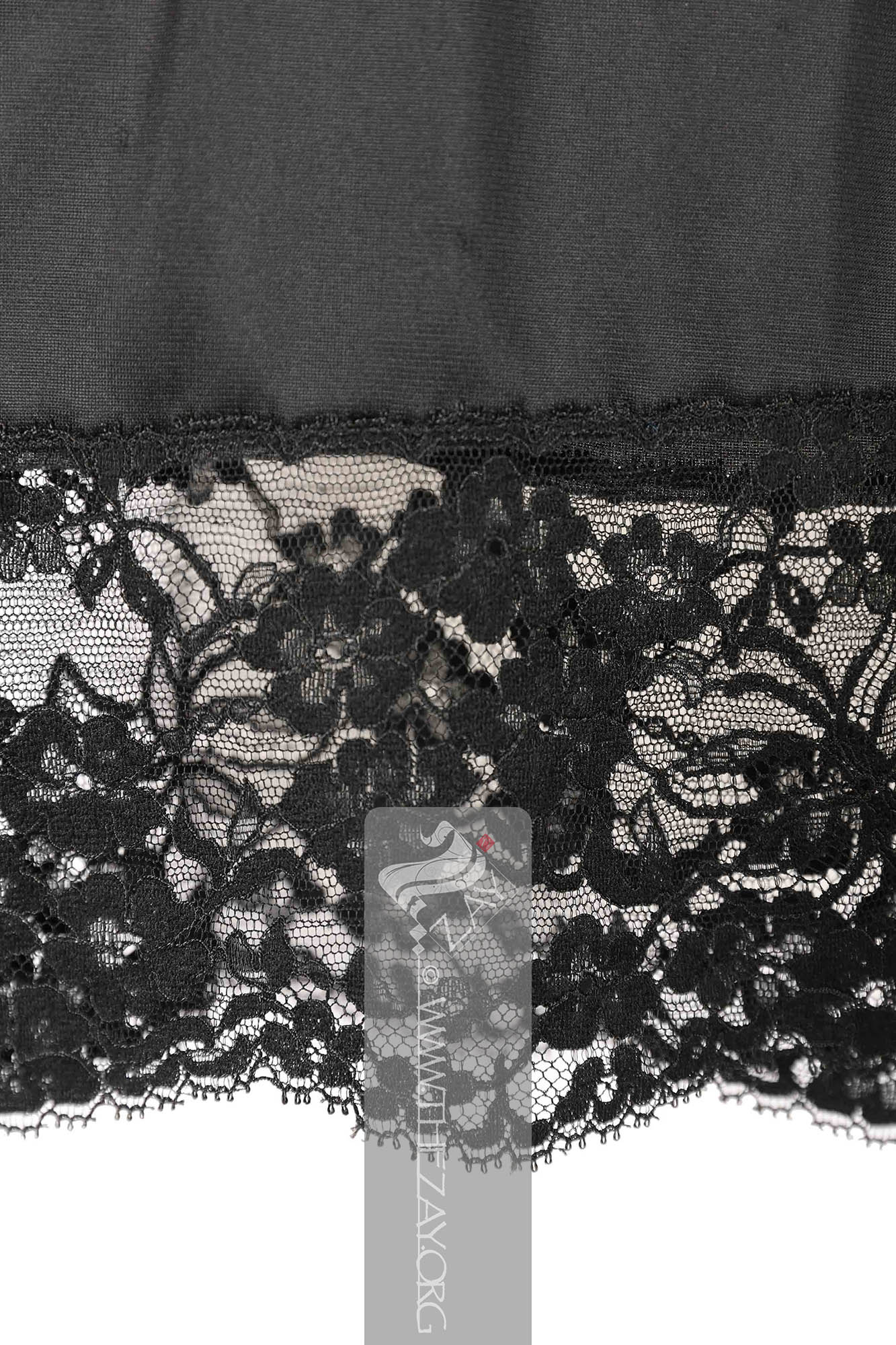
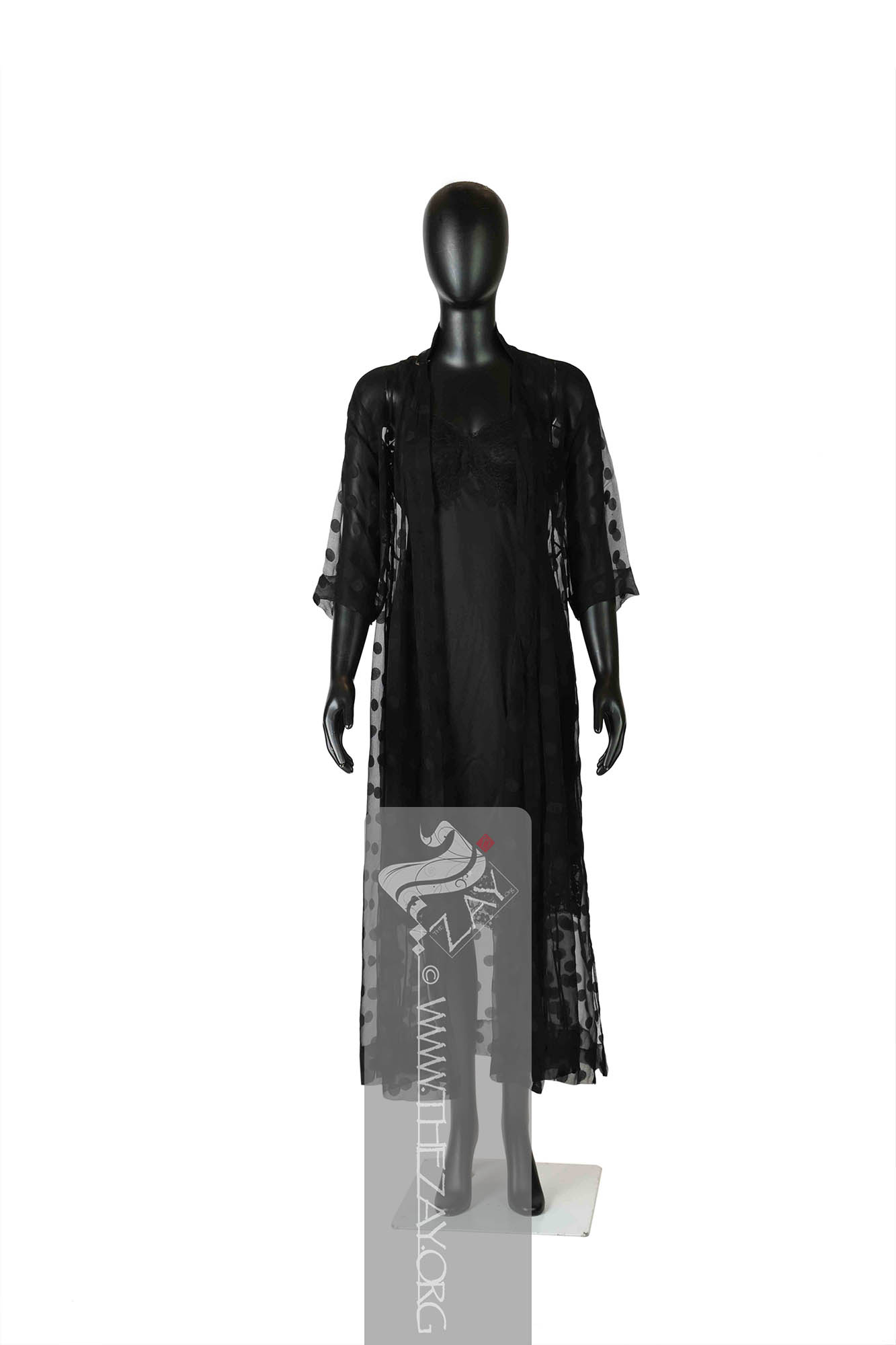
| Local Name | Gömlek, Atg |
| Object Category | Undergarment |
| Gender | Female |
| Date of object | c. 1950 – 1960 |
| Place Of orgin | Europe |
| Region | Europe |
| Object Range | Global |
| Dimensions | Length: 100 cm Width: 34 cm |
| Materials | Silk Other |
| Technique | Machine Stitched Woven |
| Color | |
| Motif | Floral |
| Provenance | Gifted, ‘Amah Salimah Abdul Aziz El Mutwalli, Baghdad 1989 |
| Location | The Zay Zay: (Arabic: costume, Pl. azyaā’), a set of clothes in a style typical of a particular country or historical period. Initiative |
| Status | In Storage |
| ZI number | ZI1989.500577a IRAQ |
Object Note
Part of a set along with another item (ZI 1989.500577 IRAQ) also in the collection.
Object History
This piece was gifted to Dr. Reem Tariq
Ṭariq: (Arabic; Synonym: tulle_bi_talli; talli; badla; khus_dozi ), series of small metal knots made on a woven net ground as embellishment. The term is commonly used in the Levant Arab region specifically in Lebanon. Ṭariq: (Arabic; Synonym: tulle_bi_talli; talli; badla; khus_dozi ), series of small metal knots made on a woven net ground as embellishment. The term is commonly used in the Levant Arab region specifically in Lebanon.
Popularly called ‘Amat Tariq
Ṭariq: (Arabic; Synonym: tulle_bi_talli; talli; badla; khus_dozi ), series of small metal knots made on a woven net ground as embellishment. The term is commonly used in the Levant Arab region specifically in Lebanon. Ṭariq: (Arabic; Synonym: tulle_bi_talli; talli; badla; khus_dozi ), series of small metal knots made on a woven net ground as embellishment. The term is commonly used in the Levant Arab region specifically in Lebanon.
Born in Baghdad in 1895, ‘Amah Salimah curiously never learned how to read or write however, she could thoroughly recite the Quran from her memory. Although she was engaged to be married to her cousin as was the custom, her betrothed sadly married a young English woman whom he had met while he was studying there.
Consequently, 'Amah Salimah remained unmarried and lived with her parents and looked after them for the rest of her life. Although such practice was prevalent in those times, and while she resigned herself to her fate, 'Amah Salimah expressed continuous regret about it until her passing.
Known for her culinary skills, ‘Ama Salimah was known for her strength in character, wisdom, kindness, and generosity. She was greatly respected by her family and friends and her culinary expertise remains unparalleled amongst them as they often compare any dish to those she used to prepare, becoming the benchmark for critiquing recipes.
Object Features
This is a woman’s knee-length slip or chemise (gömlek
Gömlek: (Proto-Turkic: köyŋelek – Shirt; Azerbaijani: köynək – Shirt; Turkmen: koynek – long loose tunic dress), a traditional calf-length sleeved undershirt or tunic generally made of a plain white cotton, silk, or linen fabric, some more lightweight than others, worn by both Ottoman men and women of all communities throughout the empire. ) / (‘atg
Atg: (Arabic), possibly a colloquial Iraqi term for a chemise like undergarment worn by women in Iraq. Also sometimes called the gömlek it was traditionally the Ottoman undergarment which gradually gave way to the western dishabille. Ṣāyah: (Classical Persian: sāya – shadow; Synonyms: zubūn, qumbāz, gombaz
Gombaz: (Arabic; Synonyms: sayah, zubūn, qumbāz, yalak
Yalak: (Ottoman Turkic: yelek – a hip or waist length vest; from Old Anatolian: yélek – Vest), a short-sleeved waistcoat traditionally worn by men and a long outer robe or tight jacket either sleeveless or short sleeved with a tight bodice traditionally worn by women in the Ottoman controlled Levant. Yalak: (Ottoman Turkic: yelek – a hip or waist length vest; from Old Anatolian: yélek – Vest), a short-sleeved waistcoat traditionally worn by men and a long outer robe or tight jacket either sleeveless or short sleeved with a tight bodice traditionally worn by women in the Ottoman controlled Levant.
The gömlek Gömlek: (Proto-Turkic: köyŋelek – Shirt; Azerbaijani: köynək – Shirt; Turkmen: koynek – long loose tunic dress), a traditional calf-length sleeved undershirt or tunic generally made of a plain white cotton, silk, or linen fabric, some more lightweight than others, worn by both Ottoman men and women of all communities throughout the empire. displays a wide V-shaped lace neckline and a pair of black silk ribbon straps lined with lace. The bottom hem of the chemise has a wide lace panel similar to the neckline. The lace panels are lined possibly with silk chiffon.
Possibly dating back to 1950 – 1960 this black chemise was possibly a European piece that was purchased to be worn as a gömlek
Gömlek: (Proto-Turkic: köyŋelek – Shirt; Azerbaijani: köynək – Shirt; Turkmen: koynek – long loose tunic dress), a traditional calf-length sleeved undershirt or tunic generally made of a plain white cotton, silk, or linen fabric, some more lightweight than others, worn by both Ottoman men and women of all communities throughout the empire. instead of the traditional one. Pieces like this will often be worn with a traditional front open jacket style robe sayah
Ṣāyah: (Classical Persian: sāya – shadow; Synonyms: zubūn, qumbāz, gombaz
Gombaz: (Arabic; Synonyms: sayah, zubūn, qumbāz, yalak
Yalak: (Ottoman Turkic: yelek – a hip or waist length vest; from Old Anatolian: yélek – Vest), a short-sleeved waistcoat traditionally worn by men and a long outer robe or tight jacket either sleeveless or short sleeved with a tight bodice traditionally worn by women in the Ottoman controlled Levant. Yalak: (Ottoman Turkic: yelek – a hip or waist length vest; from Old Anatolian: yélek – Vest), a short-sleeved waistcoat traditionally worn by men and a long outer robe or tight jacket either sleeveless or short sleeved with a tight bodice traditionally worn by women in the Ottoman controlled Levant. Hashmī: (Arabic: Hashim (House of) – an Arab royal family from the Banu Hashim clan of the Quraysh tribe), a type of elaborately decorated women’s traditional garment or thawb from Iraq that was named after the royal family that ruled Iraq until the mid 20th century.
Iraq, located south of Türkiye, was a significant Arab territory under the rule of the Ottoman Empire for approximately four centuries. In the northern province of Mosul, which was then under Ottoman rule, the prevalent modes of dress were heavily influenced by the fashion trends originating in Istanbul.
By the 1930s, the elites of Baghdad, as well as other urban Christian and Jewish communities, had fully transitioned from Ottoman attire to European-style clothing. However, among the urban Muslim elites and middle classes, the shift towards Westernised clothing occurred more gradually, the vestiges of which are seen through pieces like these which are essentially from a decade or two later.
Links
Charuga: (Possibly Kurdish), a mantle-like embroidered women’s traditional garment from the Qaraqosh region in northern Iraq, traditionally fastened at the shoulder. Historically worn by field workers, it helped conceal dust and dirt, making them less visible during labour, it is a festive garment worn sparingly during festivals and other special occasions.
from Northern Iraq Has Arrived at the TRC!, www.trc-leiden.nl/trc/index.php/en/blog/1378-the-charugaCharuga: (Possibly Kurdish), a mantle-like embroidered women’s traditional garment from the Qaraqosh region in northern Iraq, traditionally fastened at the shoulder. Historically worn by field workers, it helped conceal dust and dirt, making them less visible during labour, it is a festive garment worn sparingly during festivals and other special occasions.
-from-northern-iraq-has-arrvied-at-the-trc. Accessed 29 Jan. 2024.